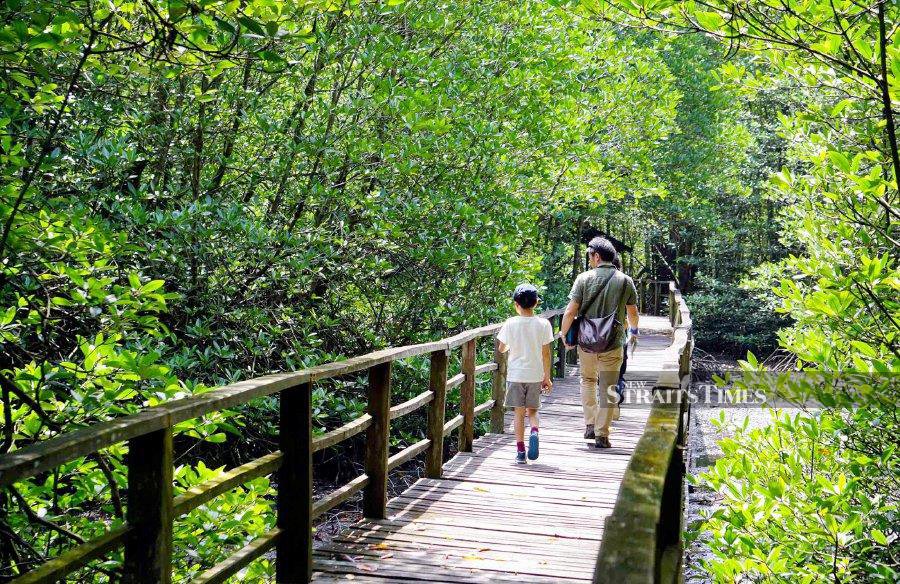THE challenges created by the Covid-19 pandemic must not obscure the long-lasting threats posed by climate change to our social well-being, economic development and global health.
That was the reassuring message recently given by Prime Minister Tan Sri Muhyiddin Yassin, who expressed his vision on the climate crisis at the virtual launch of the International Greentech and Eco Products Exhibition and Conference Malaysia (IGEM) 2021.
Muhyiddin said the government would continue to adopt a "whole-of-nation" approach to ensure that its policies are well defined and conducive to sustainable economic development.
"It is crucial that we stay agile by engaging all industry players and stakeholders to better deliver planetary health in the long run."
He added that it was time for industries, businesses and stakeholders to prepare for the post-pandemic socio-economic transition.
He said Malaysia has put in place several initiatives to ensure sustainable development, including the National Green Technology Policy in 2009.
Muhyiddin noted that the Malaysian Climate Change Action Council, which was created in April, was aimed at centralising and charting the direction of climate policies and actions across federal and state governments.
This year's IGEM theme — Redefining Sustainability — would focus on climate and green technology.
"We need to find ways collectively to pursue economic and social well-being in an environmentally friendly manner," he said.
He added that "this is also an opportunity for government institutions to reassess their strategies to revive economies, preserve the environment and bring social stability to climate challenges."
His emphasis on climate was refreshing, but led some observers to lament that the ongoing, highly linked catastrophe of biodiversity loss wasn't mentioned.
This disconnect manifested also in the form of different ministries dealing with twin environmental issues: the Water and Environment Ministry addresses climate change, while biodiversity falls under the purview of the Energy and Natural Resources Ministry.
For a long time, the two inter-related issues have been treated in a siloed manner on the global front too, in the form of separate United Nations treaties signed in 1992: the Convention on Biological Diversity and the Framework Convention on Climate Change.
A consensus has grown that the two should be treated in parallel.
Two months ago, scientists from the Intergovernmental Science-Policy Platform on Biodiversity and Ecosystem Services and the Intergovernmental Panel on Climate Change released an unprecedented joint report.
It stated: "The destruction of forests and other ecosystems undermines nature's ability to regulate greenhouse gases in the atmosphere and protect against extreme weather impacts — accelerating climate change and increasing vulnerability to it. The rapid vanishing of carbon-trapping mangroves and seagrasses, for example, both prevents carbon storage and exposes coastlines to storm surges and erosion."
The report called for governments to enact policies and nature-based solutions to address both issues.
"For far too long, policymakers tended to see climate change and biodiversity loss as separate issues, so policy responses have been siloed," said report co-author Pamela McElwee, an ecologist at Rutgers University.
"Our report points out that biodiversity loss has that similar effect on human wellbeing."
In the United Kingdom last month, G7 leaders recognised climate change as a key driver of biodiversity loss, and that protecting, conserving and restoring biodiversity was crucial to addressing climate change.
They also embraced the goal of protecting at least 30 per cent of global land and 30 per cent of the global oceans by 2030, with domestic targets set according to national circumstances and approaches.
According to experts, setting aside 30 per cent of the Earth is the minimum needed to maintain habitats under a changing climate.
This is not to say that protected areas are off limits to humans.
These areas today are increasingly diverse.
They include not just strictly protected areas, but community conservation areas, also known as "Other Effective Area-based Conservation Measures" set up by local communities, and sustainable-use reserves which often allow a broad expanse of human activities under certain regulations.
Notwithstanding the political conundrum that we are currently mired in today, our leaders must not lose sight of the twin existential threats facing us: biodiversity loss and climate change.
In the words of one of Malay-sia's foremost negotiators on climate change, Dr Gary Theseira: "Without biodiversity conservation, any reference to nature-based solutions to address climate change will have no credibility whatsoever."
The writer is Science Adviser to the Campaign for Nature and Malaysia's former Prime Ministerial Science Adviser






